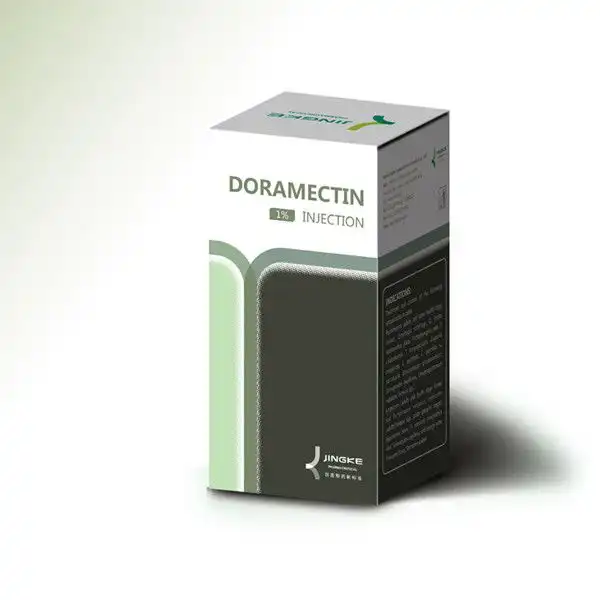1, Overcoming Deworming Dilemmas in Animal Husbandry
Many breeding farmers feel confused when choosing deworming drugs for animals in their breeding and reproduction stages, unsure of how to select the right medication. Some even hesitate to try new drugs, leading to prolonged use of traditional deworming methods (like Trichlorfon and Niclosamide), and in some cases, even using pumpkin seeds. These methods might achieve a perceived “deworming effect” in small-scale farming. However, when used on a large scale, various problems arise, such as failing to achieve effective kill range, abortions, and poisoning occurring frequently. How to choose convenient and effective deworming drugs is a matter worth considering and reflecting upon in the farming process.

2, Doramectin: A Broad-Spectrum and Long-Acting Antiparasitic Drug
When using deworming drugs, grasping the right timing and coordinating with the seasons can lead to twice the result with half the effort. First, let’s understand doramectin. Doramectin is a new generation of antiparasitic drug. Compared with other ivermectin commercial products, doramectin has a broader antiparasitic spectrum (all external parasites, internal nematodes), better efficacy, and a longer effective period to prevent parasite re-infestation. It is currently the best and most promising new veterinary antiparasitic drug in the world. Doramectin injection is administered by intramuscular injection, and a single injection can maintain efficacy for several weeks.
3, Recommended Timing and Dosage for Effective Deworming with Doramectin
When to Use: It is recommended to deworm breeding animals 2-3 times a year and fattening animals twice a year, which can be done in March-April, June-August, or July-September. For grazing animals, it is recommended to use it at least twice a year, during spring and autumn prevention periods.
- Breeding Female Animals: It can be used safely before mating, 30 days after mating to 20 days before calving, and 15 days after calving. It has no toxic side effects inherent to the drug itself.
- Dairy Animals: The recommended time for use is 60-30 days before calving. This ensures that the animals themselves are not harmed by parasites and also prevents drug residues in the milk.
- Fattening Animals: Use once after weaning, and it can be used again after an interval of 2-3 months. This can reduce the absorption of nutrients and damage to the intestines caused by parasites.
- Method of Use: Intramuscular injection, 1 ml per 33 kg of body weight. Effective protection time is 120 days.
4, Frequently Asked Questions
- Does it affect milk and lactation?
It has no direct effect on milk or lactation and will not stimulate the body to reduce milk production. It will not change the nutritional composition of milk. However, using it during lactation will result in short-term residues in the milk. Therefore, we should use it before 20 days prior to calving to avoid drug residues and reduce the stress on the animal caused by postpartum medication. - Can it be used on recently bred female animals?
It can be used, but caution should be taken. It is not recommended to use it within 15 days of mating. All chemical deworming drugs are antibiotics and have a slight “anti-inflammatory” effect, with a 1/100 chance of inhibiting embryo implantation. If deworming is done in batches, this situation can be ignored as the probability is low and not universal. - Can it be used on heavily pregnant female animals?
It can be used, but when using it, we should clearly know the expected calving date of the treated animal. If it is less than 20 days away, it is not recommended. This is not related to the drug itself but mainly because female animals in this period are prone to stress reactions caused by external stimuli, including constipation, loss of appetite, premature birth, and agalactia. If it must be used, it is recommended to do it simultaneously when moving the animal to the calving bed or pen.

